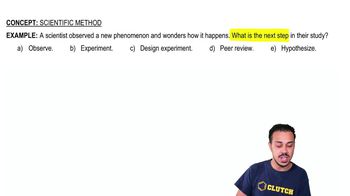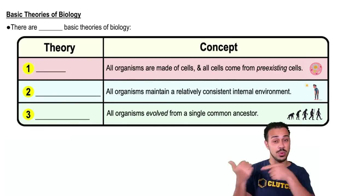1. Introduction to Biology
Scientific Method
Learn with other creators
Practice this topic
- Multiple Choice
Which of the following shows the best order of steps of the scientific method?
9245views77rank - Open Question
A scientist observes that even after sterilizing a broth, cells reappear in the broth over time. The scientist then asks: 'Why do cells reappear in the broth after sterilization?' and designs/conducts an experiment. Considering this, appropriately label each of the following blanks as either a 'prediction, hypothesis or theory.'
________________: Cells will only appear in the broth exposed to a source of preexisting cells.
________________: Cells appear only when preexisting cells grow & divide; therefore, cells only appear in exposed broths.
________________: All organisms consist of cells & all cells come from preexisting cells.
1675views92rank1comments - Multiple Choice
Which of the following statements about the cell theory is false?
5580views57rank - Multiple ChoiceExperimentation is only one part of the process of scientific inquiry, but it is a very important step because it __________.1958views2rank
- Multiple ChoiceWhich of the following statements most clearly demonstrates inductive reasoning?1565views2rank
- Textbook Question
Which of the following is an example of inductive reasoning?
a. All cows eat grass.
b. My cow eats grass and my neighbor's cow eats grass; therefore, all cows probably eat grass.
c. If all cows eat grass, when I examine a random sample of all the cows in Minnesota, I will find that all of them eat grass.
d. Cows may or may not eat grass, depending on the type of farm where they live.
3127views - Textbook Question
A scientific hypothesis is ________.
a. An opinion
b. A proposed explanation for an observation
c. A fact
d. Easily proved true
e. An idea proposed by a scientist
1697views - Textbook Question
In science, a theory is a(n)
a. Educated guess
b. Inference based on a lack of scientific evidence
c. Idea with little experimental support
d. Body of scientifically acceptable general principles
e. Statement of fact
2407views












